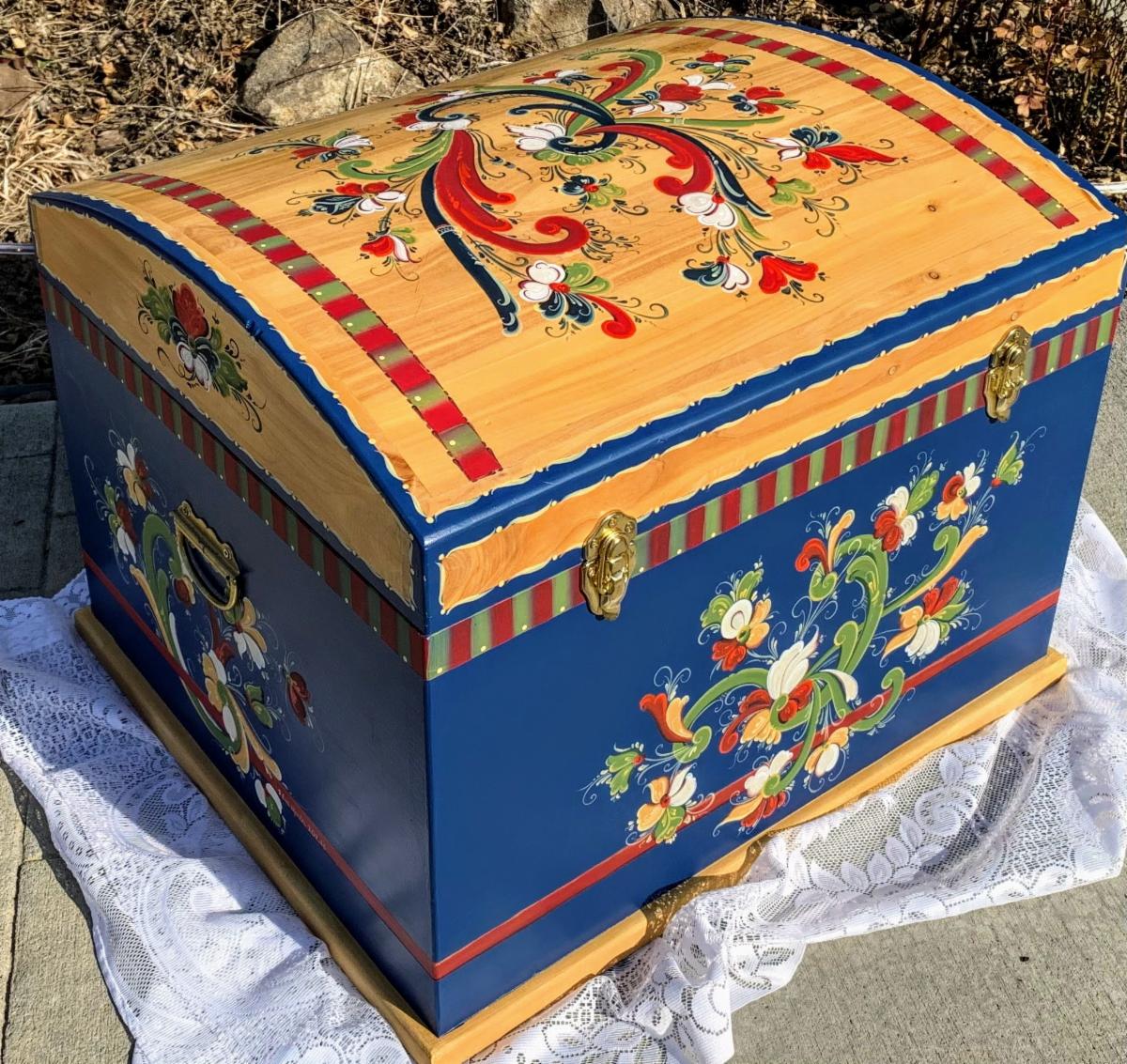Enjoy the Norwegian
Culture in your home
My Story
I have rosemaled for 20+ years and have always had a paintbrush in my hand. I have used watercolors, acrylics and oils in my youth. If anything needed to be painted I was there helping out.
Rosemaling became my calling after seeing it at a friend’s house one Christmas. Growing up in Sweden, this beautiful Norwegian Telemark Rosemaling is very similar to the Swedish Kurbitz paintings but more free flowing. It lets you be creative while still following the rules of rosemaling.
I moved to Boise, ID in 1993 with my husband and son. While pregnant with our second child I was introduced to Joanne Hultstrand who became me teacher and mentor. We earned a scholarship from the Boise Commission of the Arts in 1999. I have taken classes with the Norwegian rosemaler Bjorg Kleive throughout the years each time pushing me further in my painting technique.
Every year I participate in the Sons of Norway ‘s Christmas Bazaar in Boise ID. You can also find me at the Scandinavian Midsummer Festival in Astoria, OR in June.
In June 2010, Eva attended the Scandinavian Midsummer Festival in Astroria Oregon and caught the eye of the Local News reporter of the Daily Astrorian. The full story can be found below.
My Experiences
Quote from the Daily Astrorian:
In a booth across the hall, Swedish-born and raised Eva Hjorth carried on a Norwegian tradition: Norwegian Rosemaling in the Telemark Style.
Using acrylic paint, Eva Hjorth made intricate images bloom across platters and bowls in S and C shapes.
"Rosemaling," she explained, means to decorate something. Different forms of decoration developed in different Norwegian valleys and "Telemark" is just one of many styles.
Eva Hjorth, who lives with her Norwegian husband in Boise, Idaho, said there are a few people in that area who practice the art. Maybe her two children will take it up someday, she said, but for now they're content to help her sand the painting surfaces.
Traditional Arts Apprenticeships
Two master artists and their qualified apprentices have been awarded $3,000 each as part of the annual Traditional Arts Apprenticeship program. The program is designed to facilitate learning partnerships between a recognized master artist and an apprentice to continue artistic traditions in a shared community.


